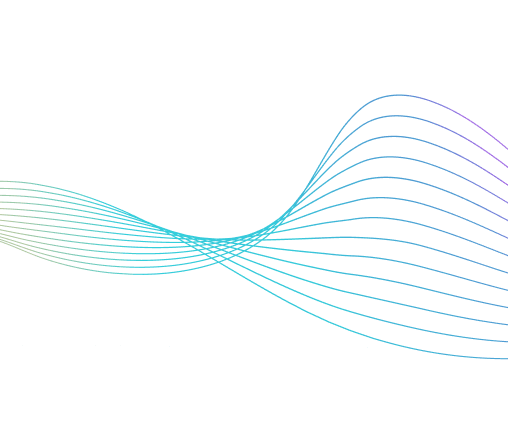Published on 00/00/0000
Last updated on 00/00/0000
Published on 00/00/0000
Last updated on 00/00/0000
Share
Share

QUANTUM
10 min read

Share
If there's one buzzword competing with "agentic AI" for headlines these days, it's "quantum." And today's the perfect day to celebrate it— World Quantum Day! It's no coincidence that this year, the World Economic Forum (WEF) has designated 2025 as the International Year of Quantum Science and Technology (IYQ), marking 100 years since the initial development of quantum mechanics.
With all this quantum buzz, it can be hard to separate hype from reality. TL;DR: This is a space worth watching closely. To get the fundamentals from an expert, I sat down with Reza Nejabati, the Head of Cisco Quantum Labs, who's leading a dynamic team of quantum scientists and engineers, spearheading the developments at Cisco's Quantum Research Lab.
Q: You've had quite a journey before joining Cisco. Could you tell us about your background and what convinced you to lead Cisco's quantum efforts?
Nejabati: Before joining Cisco, I served as a Chair Professor of Networks and Head of the High-Performance Network Group at the University of Bristol in the UK, specializing in quantum and classical network infrastructure. I spent over a decade in academia leading quantum networking research and served as an advisor to the British government’s Office for Science on quantum initiatives.
I also gained valuable entrepreneurial experience by commercializing my research through a startup, and that experience taught me something crucial—to truly succeed in quantum networking, you need both innovative vision and substantive resources. What drew me to Cisco was recognizing they had both the know-how and the scale to make quantum networking a practical reality.
I saw a parallel between quantum networking today and the early days of the internet. When Cisco helped build the internet, they innovated on both protocols like IP routing and the hardware itself. That's exactly what we need now in quantum networking. The science is established, but we need someone to innovate on the protocols to move quantum information around and build the hardware to support it. Cisco's background in building the infrastructure that powered the internet provides valuable lessons that can help us move faster in the quantum space.
Q: For those who understand classical networking but not quantum, what makes quantum networking fundamentally different?
Nejabati: Classical networking is digital at its core. You're moving around bits—series of ones and zeros that represent your information. But quantum networking operates by entirely different rules.
Think of it this way: In a classical network, if I want to send you information like a flag that could be red or green, I would ship either the red flag or the green flag between two points.
In a quantum network, I ship you a box with a flag inside that exists in both red and green states simultaneously. The moment you open the box and determine the flag is green, anyone else with an entangled box immediately knows it's green too, regardless of distance. This instantaneous connection is what Einstein called "spooky action at a distance."
Q: What makes this so challenging from an engineering perspective?
Nejabati: The main challenge is that quantum information is incredibly fragile. In the quantum domain, a qubit exists in superposition—it can be both 0 and 1 simultaneously. But as soon as you try to observe it or measure it, this superposition collapses, and you lose the quantum advantage.
This means we need to preserve the quantum properties of the information from source to destination. You can't process it along the way as we do in classical networks. You can't amplify signals, store information temporarily, or use traditional routing techniques because all of these would collapse the quantum state.
At Cisco Labs, we're developing specialized quantum network elements that can handle quantum information without destroying its quantum properties. We're leveraging quantum phenomena like entanglement and teleportation that have no classical equivalent to build networks that can connect quantum computers while preserving their computational power.
Q: Today's quantum computers are still quite limited in scale. How would you explain to someone just learning about quantum computing what makes this such a challenge?
Nejabati: To have a useful, practical quantum computer—one that can do something really impactful like new drug discovery, weather forecasting, or new material discovery—you need hundreds of thousands to millions of qubits. A qubit is the fundamental element of a quantum computer, similar to how bits define the power of classical processors.
Today, we're in the region of a few hundred qubits, and by 2030, we might reach a few thousand qubits per processor. But there's an enormous gap between a few thousand and the hundreds of thousands or millions needed for many transformative applications. This is where the scaling challenge emerges.
Monolithic quantum computers face fundamental physics and practical limitations in terms of power, cooling systems, chip size and tremendous cost to operate them. To achieve the scale needed for truly practical applications, connecting multiple smaller quantum processors together using a quantum network appears to be the most viable path forward.
Q: This is where the concept of a "Quantum Data Center" comes in?
Nejabati: Absolutely. Think about what's happening with GPUs for AI. A single GPU has limited capabilities, but when you network thousands together in a data center, you can train large language models like GPT-4. Quantum computing is following the same evolutionary path.
The Quantum Data Center is our vision for how quantum computing will be practically implemented at scale. Rather than waiting for enormous monolithic quantum computers, we believe the path forward is to network quantum processors together in a controlled data center environment, allowing them to work collectively on larger problems.
Cisco's Quantum Data Center framework not only offers the scalability necessary for large-scale quantum computation but also provides the economic and operational benefits of centralized quantum resources in a controlled environment. We're developing scalable architectures for quantum data center networks, drawing on foundational principles from classical data center networking—an area where Cisco is already a proven leader.
We've published research on this approach that outlines the technical details of how we're designing these architectures.
Q: What role does quantum entanglement play in networking, and why is it so important?
Nejabati: Quantum entanglement serves as the foundation of quantum networking. When two particles become entangled, they form a connection where the state of one instantly affects the other, regardless of the distance between them.
In simple terms, if we create two entangled particles—in our case, photons—and send one to each side of a network, any change to one will instantly be reflected in the other without any physical connection between them. This phenomenon allows for instantaneous transfer of quantum states.
Entanglement is essential for quantum networking because it allows us to transfer quantum information between quantum processors without losing the quantum properties that make them powerful. Our Quantum Data Center design uses a dynamic, circuit-switched quantum network to facilitate efficient entanglement distribution among quantum computers.
You can read about our research on scalable entanglement distribution protocols for quantum networks, which explores different approaches to establishing entanglement links across a network. This is one of the fundamental building blocks for creating a practical quantum network.
Q: Many experts suggest quantum computing won't be practical for decades, but Vijoy Pandey, SVP and GM of Outshift by Cisco, has suggested a "quantum ChatGPT moment" may be just 3-5 years away. What's your perspective on this timeline?
Nejabati: I share Vijoy's outlook on this. The catalyst that will bring that quantum ChatGPT moment in 3-5 years rather than decades is networking. If you have a quantum network ready to connect multiple processors together, you can achieve practical quantum computing much sooner than waiting for perfect, massive quantum processors.
We're building that network now, focused on making it capable of connecting quantum processors with any quantum technology and from any vendor. This distributed approach will accelerate the timeline to useful quantum applications by years.
Q: What applications might emerge first from this networked approach?
Nejabati: I anticipate the first breakthrough applications will be in pharmaceutical research and new materials discovery. Imagine being able to simulate molecular interactions at a quantum level, leading to personalized medicine or discovering new materials for a revolutionary battery technology.
These applications require the kind of computational power that only quantum computers can provide, and they address challenges of enormous significance to humanity. By enabling distributed quantum computing through networking, we can unlock these capabilities years sooner than previously thought possible.
Consider the potential impact: personalized, affordable drug treatments available to everyone or new materials for batteries that revolutionize energy storage. These aren't just technological advances—they're solutions to some of humanity's most pressing challenges.
Q: Who are you partnering with to make this vision a reality?
Nejabati: We've established partnerships with leading universities and research institutes to advance our quantum networking technologies. This includes collaborations with UC Santa Barbara, University of Arizona, University of Washington, UC Davis, MIT, and University of Chicago, University of Oxford, among others.
These partnerships are crucial not just for the research itself, but also for building the talent pipeline we need. We're supporting quantum engineering education programs at several universities to help train the next generation of quantum experts. This is especially important as we're facing a significant talent gap—we need more engineers and scientists who understand both quantum technology and practical engineering implementation.
We're also working closely with Cisco's teams to ensure our research translates into products that our customers can use. Interestingly, we're increasingly being approached by Cisco customers, particularly in the financial sector, who envision applications for quantum technologies that even we hadn't fully anticipated.
Q: Finally, what excites you most about the work you're doing, and what keeps you up at night?
Nejabati: What truly energizes me is that our work at Cisco can be the key technology enabler that makes useful quantum computing a reality. We're helping bridge the gap between today's limited quantum processors and the large-scale systems needed for transformative applications.
My main concern is how we can make this technology both scalable and universally accessible. The promise of quantum computing is immense— imagine rapid drug discoveries, cutting-edge materials science, precise weather forecasting, and giant leaps forward in AI. Quantum computing could help us solve some of humanity's most pressing challenges, from climate change to energy storage. I want to ensure the technology we develop is practical in terms of cost, complexity, and scalability, so these benefits can be realized and broadly shared across society.
As our conversation concluded, it became clear that Cisco's approach to quantum computing represents a pragmatic path forward—one that leverages our networking expertise to solve the fundamental scaling challenge in quantum computing. Rather than waiting decades for perfect quantum processors, we're building the infrastructure needed to connect smaller processors at scale, potentially bringing the quantum revolution years closer.
What's particularly striking about our approach is how it echoes Cisco's historical role in building the classical internet. Just as the company helped create the networking infrastructure that connected computers around the world, we're now positioning ourselves to build the quantum networking infrastructure that will connect quantum computers and unlock their full potential.
To learn more about Cisco's quantum networking vision and stay up-to-date with the latest developments, visit the Outshift Quantum page where you can explore our research, blog posts, and innovations in this rapidly evolving field. The quantum future may be closer than we think—and we at Cisco are actively building the technology and networks that will make it possible.


Get emerging insights on innovative technology straight to your inbox.
Explore the detailed design of Cisco’s Quantum Random Number Generator (QRNG) which leverages quantum vacuum noise to ensure true randomness.

* No email required

The Shift is Outshift’s exclusive newsletter.
Get the latest news and updates on agentic AI, quantum, next-gen infra, and other groundbreaking innovations shaping the future of technology straight to your inbox.
